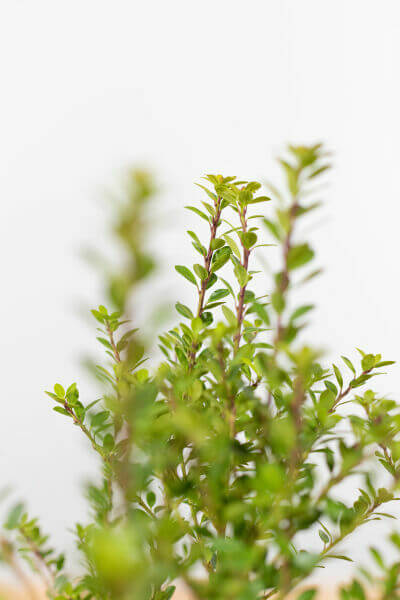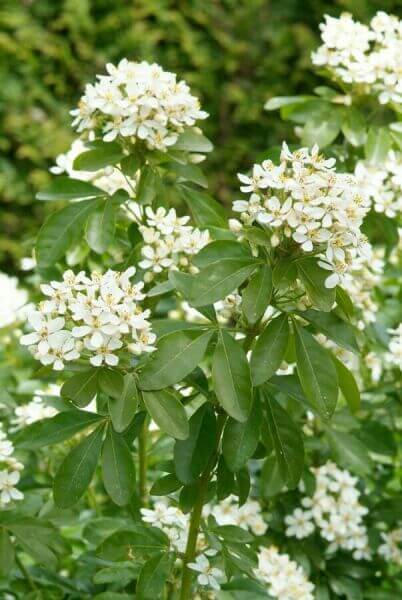Best Hedging Plants For Green Dividers
Enhance your garden's appeal with rich hedge ranges such as Yew (Taxus), Thuja, Laurel, Photinia, and Bamboo, celebrated for their structural stability and ecological benefits.
Yew and Thuja provide evergreen protection and winter season durability, while Laurel uses rapid growth and broad, aromatic leaves.
Photinia adds seasonal appeal with its lively red foliage, and Bamboo lends a low-maintenance, peaceful atmosphere.
These hedges enhance air quality, decrease sound, and develop tranquil, private spaces.
Appropriate planting, spacing, and upkeep ensure vigorous development and eco-friendly harmony.
Explore how these rich ranges can raise your garden's beauty and well-being.
Key Takeaways
Change Your Garden With Lush Hedge Ranges
- Select Yew for its thick, evergreen growth and exceptional durability.
- Opt for Laurel for its fast growth and broad leaves, guaranteeing fast personal privacy.
- Select Photinia for its lively seasonal foliage, which turns a striking dark red.
- Make use of Bamboo for a low-maintenance, winter-hardy hedge with visual appeal.
- Space plants 2-3 per meter and prune routinely for optimum development and health.
Popular Hedge Plants
When changing a garden with lush hedge varieties, it's necessary to consider popular hedge plants such as Yew, Thuja, Laurel, and Photinia due to their distinct qualities and benefits.
Yew (Taxus) is highly respected for its durability and dense, green development, making it a prime option for withstanding landscapes.
Thuja is noted for its evergreen foliage and robust winter durability.
Photinia adds seasonal vibrancy with red leaves that darken in time, producing dynamic visual appeal.
Laurel offers rapid growth and aromatic, broad leaves, perfect for fast privacy.
Additionally, Bamboo is an outstanding choice for ambiance, using a low-maintenance, winter-hardy alternative that boosts the garden's visual with its stylish, swaying canes.
These choices deal with a variety of horticultural needs and choices.
Advantages of Garden Hedges
Garden hedges offer a wide variety of advantages, making them a valuable addition to any landscape. These natural barriers are cost-effective to carry out and offer significant wind defense, improving air circulation and adding to sound reduction. The thick foliage of hedges like Thuja and Beech ensures personal privacy by obstructing presence, producing a remote and tranquil environment.
Hedges likewise play an important role in microclimate guideline, offering a stable environment that fosters plant growth and minimizes temperature level changes. Their intricate leaf structures filter toxins, improving air quality and adding to a healthier garden environment.
Moreover, hedges stand out in noise reduction, soaking up and deflecting sound waves to lower ambient sound levels. This double functionality of providing both acoustic and visual privacy boosts the overall serenity and visual appeal of any garden.
Planting and Maintenance Tips
For an effective hedge, careful preparation of the planting area is important. Make sure the soil has appropriate pH and drain to support strong root development.
Space the plants properly for the picked types. Water the hedge frequently during its preliminary development phase, adjusting as required with seasonal modifications.
Implement a systematic insect control and illness avoidance strategy, using chemical or natural treatments when essential. Frequently inspect for aphids, mites, and fungal infections.
Apply mulch to keep wetness and reduce weeds. Seasonal pruning promotes thick development and air blood circulation, essential for plant health.
Following these guidelines will help you cultivate a dynamic, well-kept hedge that boosts the appeal of your garden.
Spacing and Cutting Standards
Spacing and Cutting Standards
Correct spacing and cutting are crucial for cultivating healthy, aesthetically appealing hedges. Appropriate spacing makes sure each plant gets enough nutrients, light, and air flow.
Follow these standards for ideal hedge upkeep:
- Spacing: Position hedge plants 2-3 plants per meter to encourage robust growth.
- Pruning Methods: Regular pruning is important for preserving desired hedge height and shape. Trim brand-new development in summer season and cut back older wood during winter season.
- Seasonal Care: Change trimming schedules and approaches according to seasonal requirements to make sure plant health.
- Hedge Height: Routinely screen and trim to maintain the desired hedge height and accomplish uniform aesthetic appeals.
Following these steps will guarantee your hedge grows, improving both the appeal and functionality of your garden.
Choosing the Right Hedge
Picking the Right Hedge
Choosing the appropriate hedge includes assessing factors such as fully grown height, foliage density, and ecological resilience. Effective hedge plant selection requires comprehending each species' development qualities and site-specific flexibility.
For example, Yew (Taxus) provides excellent durability and dense development, while Thuja is noteworthy for its winter season durability. In addition, considering upkeep requirements is important; fast-growing types like Laurel or Privet demand regular trimming, whereas low-maintenance choices like Bamboo or Ivy may be more effective for those seeking very little upkeep.
Ecological factors such as soil type, light accessibility, and moisture conditions must also assist the selection process. This mindful approach guarantees the picked hedges will flourish, supplying both aesthetic and practical benefits to the garden landscape.
Delivery and Planting Advice
To ensure your hedge plants prosper, they need to be delivered by specialized couriers and planted immediately upon arrival.
Follow these essential actions for effective planting:
- Soil Preparation: Improve the soil with raw material to enhance drain and nutrient content.
- Planting Depth: Produce a trench two times the width and equal to the depth of the root ball.
- Watering Methods: Water completely after planting, keeping the soil regularly moist but not saturated.
- Mulching: Use a layer of mulch to maintain wetness and reduce weeds.
Customer Support and Service
Given the important function of timely support in horticultural pursuits, our client support team is offered 6 days a week through telephone, e-mail, and social networks to use skilled advice and swiftly deal with any concerns. Their dedication to quick response times ensures customer satisfaction by dealing with queries associated with plant health, optimal planting methods, and maintenance schedules.

Interaction Approach
Within 24 hours
This extensive assistance system, enhanced by an excellent 9.3/ 10 customer rating, highlights our commitment to enhancing the gardening experience for every client.
Frequently Asked Concerns
The Length Of Time Does It Take for Hedge Plants to Develop?
Hedge plants normally need one to 3 years to end up being completely established, with the precise duration varying by species and growing conditions.
Effective care during this critical duration is necessary for robust development. Constant watering, watchful weed control, and suitable fertilizer application are critical in promoting strong root development.
For example, fast-growing types like Laurel might develop faster, while slower-growing varieties such as Yew might take longer. Thorough upkeep speeds up the establishment process, leading to thick and healthy hedges.
What Are the very best Hedge Plants for Personal Privacy?
The concern of the very best hedge plants for privacy involves assessing evergreen and deciduous choices.
Evergreen hedges like Thuja, Laurel, and Cypress offer year-round coverage, ensuring constant personal privacy.
In contrast, deciduous hedges such as Beech offer seasonal personal privacy, shedding leaves in chillier months.
Secret maintenance suggestions for personal privacy hedges include regular cutting, fertilizing in spring, and proper spacing-- normally 2 to 3 plants per meter.
Furthermore, constant watering and diligent weed elimination are important for promoting healthy, dense development.
Can Hedge Plants Draw In Wildlife to My Garden?
Yes, hedge plants can attract wildlife to your garden by providing necessary benefits like shelter, food, and nesting websites, consequently enhancing regional biodiversity. For example, yew, holly, and laurel are exceptional for drawing in birds, while ivy supports a variety of pests.
However, it is essential to note that there are some disadvantages, such as increased maintenance to manage bugs and regular maintenance. Thoroughly selecting and keeping hedge varieties can help stabilize these benefits and disadvantages, eventually cultivating a sustainable and dynamic environment in your garden.
Are There Any Flowering Hedge Plants Available?
Yes, there are flowering hedge plants available that can enhance the appeal of your garden.
For instance, Elaeagnus, also referred to as Olive Willow, produces aromatic white flowers in the fall, adding a touch of elegance.
Photinia, another popular option, showcases lively red leaves that mature into a rich green, producing a vibrant visual result throughout the seasons.
To make sure these plants thrive, it's necessary to practice appropriate pruning strategies and seasonal upkeep, such as cutting new growth in the summer and cutting back in the winter.
These steps will assist preserve the health and visual appeal of your blooming hedges.
How Do I Avoid Insects in My Hedge Plants?
To avoid bugs in hedge plants, use natural bug control approaches and keep correct hedge care. Present beneficial insects like ladybugs, which prey on harmful pests, to create a well balanced environment.
Regularly inspect your hedges for signs of infestation and quickly remove any affected parts to prevent the spread. Guarantee the health of your hedges by applying balanced fertilizers and supplying appropriate water.
Utilize mulching to keep soil moisture and proper spacing to reduce plant tension and promote robust development. These practices jointly help in reducing pest concerns and keeping a healthy hedge.
Conclusion
In essence, selecting the best hedge varieties such as Yew, Thuja, and Laurel can change any garden into a relaxing haven. These plants provide year-round greenery, enhance visual appeal, and deal practical advantages like noise reduction and wind defense.
Appropriate planting techniques, precise spacing, constant watering, and seasonal trimming are essential for ideal growth.
Dependable shipment services and professional customer assistance ensure a smooth experience from purchase to planting, making it simpler than ever to raise your outside space.
Garden hedges use a read more wide variety of benefits, making them an important addition to any landscape. These natural barriers are cost-effective to carry out and provide substantial wind protection, boosting air circulation and contributing to sound reduction. The dense foliage of hedges like Thuja and Beech makes sure privacy by blocking visibility, producing a tranquil and remote environment.

Pruning Methods: Regular pruning is essential for keeping preferred hedge height and shape. Trim brand-new growth in summer and cut back older wood throughout winter.
Comments on “Best Hedging Plants For Soft Borders”